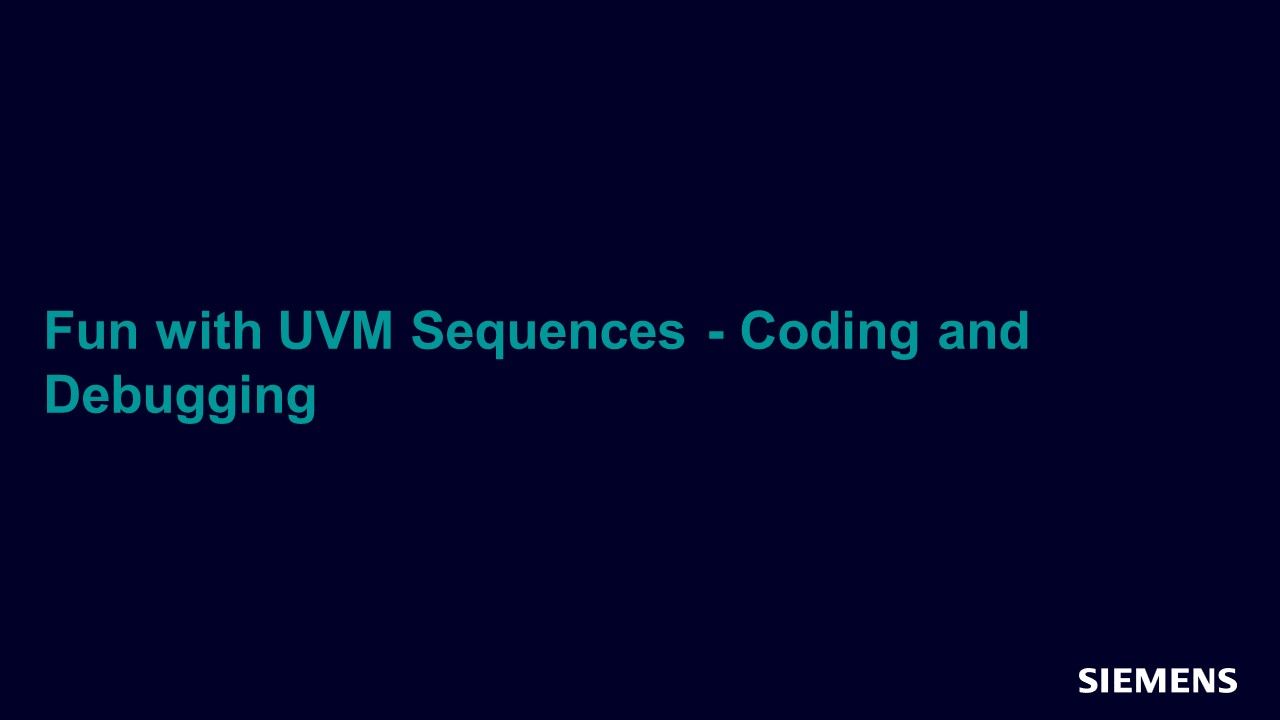Fun with UVM Sequences - Coding and Debugging
In a SystemVerilog UVM2 testbench, most activity is generated from writing sequences. This article will outline how to build and write basic sequences, and then extend into more advanced usage. The reader will learn about sequences that generate sequence items; sequences that cause other sequences to occur and sequences that manage sequences on other sequencers. Sequences to generate out of order transactions will be investigated. Self-checking sequences will be written.

Full-access members only
Register your account to view Fun with UVM Sequences - Coding and Debugging
Full-access members gain access to our free tools and training, including our full library of articles, recorded sessions, seminars, papers, learning tracks, in-depth verification cookbooks, and more.